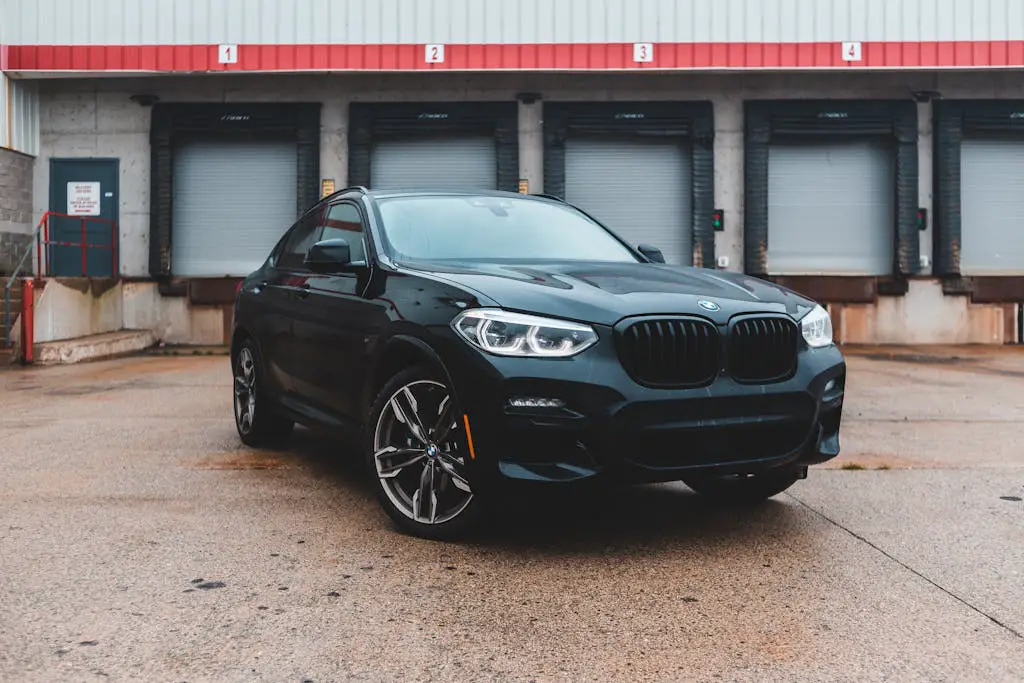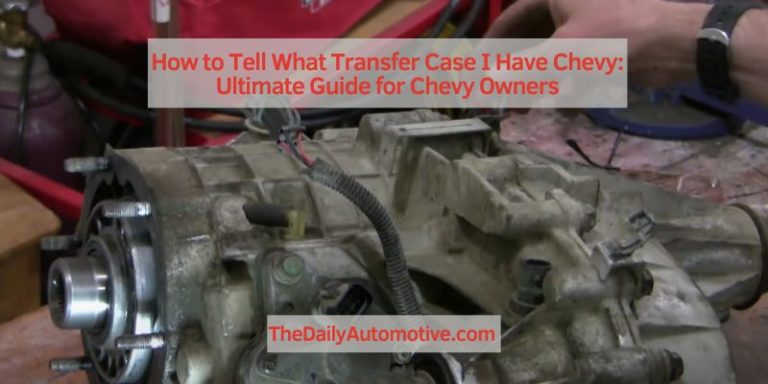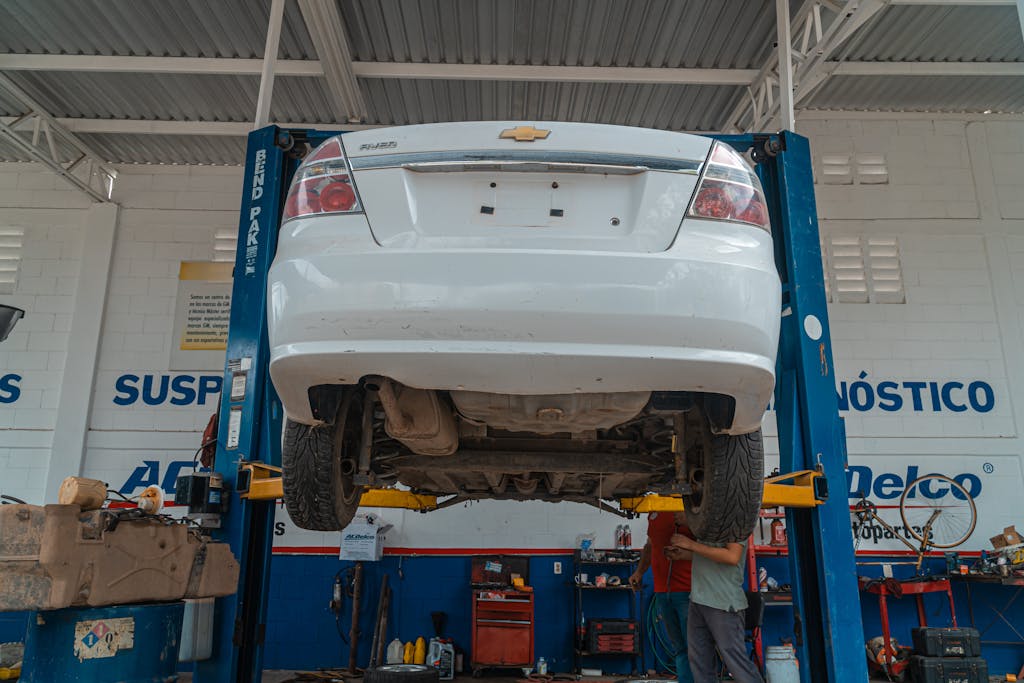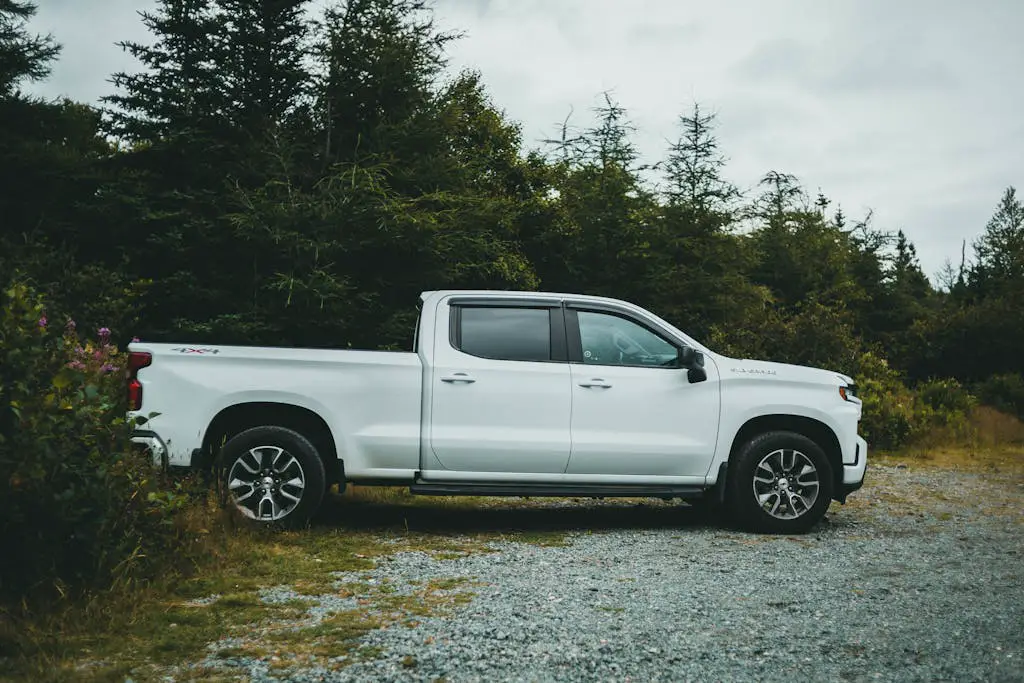How to Build a Chevy 302: Unleash the Power Under Your Hood
To build a Chevy 302, gather all necessary parts and tools, disassemble the engine, clean all components, inspect for damage, replace or repair as needed, reassemble the engine, and perform necessary adjustments for optimal performance and reliability. When it comes to building a Chevy 302, it’s crucial to have the right parts and tools at hand.
In this guide, we’ll show you how to efficiently build a Chevy 302 engine from scratch. From disassembling the engine and inspecting each component to cleaning, repairing or replacing damaged parts, and reassembling the engine with precision, we’ll walk you through the entire process step by step.
With attention to detail and proper adjustments, you can build a powerful and reliable Chevy 302 engine that will deliver satisfying performance on the road or on the track. Get ready to bring your dream project to life and unleash the power of a well-built Chevy 302.
Gathering The Necessary Tools And Materials
Before jumping into the exciting process of building a powerful Chevy 302 engine, it is crucial to gather all the necessary tools and materials. Having the right equipment at hand will not only make the engine build smoother but also ensure the end result is precisely as desired. Let’s explore the essential items you’ll need throughout this project.
Engine Hoist And Stand
An engine hoist and stand are indispensable tools for any engine building project. They provide the necessary support and stability while working on your Chevy 302. With an engine hoist and stand, you can safely lift and remove the engine from the vehicle chassis, making it easier to access all the components and carry out the required modifications.
Socket Set And Wrenches
A reliable socket set and a collection of wrenches will be your best friends during the Chevy 302 engine build. These tools allow you to loosen and tighten various bolts, nuts, and fittings when disassembling and assembling different parts of the engine. Make sure to have a wide range of socket sizes and different types of wrenches, such as standard, metric, and adjustable, to cover all the required specifications.
Performance Parts And Upgrades
Enhancing the performance of your Chevy 302 engine is a thrilling aspect of this project. To achieve optimal power and efficiency, consider investing in performance parts and upgrades. Upgrading components like the intake manifold, camshaft, cylinder heads, and exhaust headers can significantly increase horsepower and torque. Research and select high-quality performance parts that are compatible with your Chevy 302 to maximize your engine’s potential.
Shop Manual
A shop manual specifically designed for your Chevy 302 engine is an invaluable resource throughout the build. This comprehensive guide provides step-by-step instructions, torque specifications, and critical details for every aspect of the engine assembly and installation process. It ensures that you follow the correct procedures and avoid costly mistakes. Make sure to have a shop manual readily available to refer to at every stage of the build.
Disassembling And Inspecting The Engine
Disassembling and inspecting the engine is a crucial step when building a Chevy 302. This process allows you to identify any underlying issues, determine which components need to be replaced or refurbished, and ensure that the engine is in optimal condition for future performance. In this section, we will guide you through the necessary steps, starting with removing external accessories, followed by disassembling the engine, and finally inspecting the engine components.
Removing External Accessories
The first step in disassembling the Chevy 302 is to remove all external accessories. This includes the water pump, alternator, power steering pump, and any other components that may be attached to the engine. By carefully disconnecting and removing these accessories, you’ll gain better access to the engine and its internal components.
Disassembling The Engine
Once the external accessories are removed, it’s time to disassemble the engine itself. Start by removing the intake manifold, cylinder heads, and valve covers. Carefully loosen and remove all bolts, taking note of the order and location for reassembly. Be sure to label and organize the components as you go, ensuring that each part is accounted for and easily identifiable.
Next, remove the timing chain and gears, as well as the camshaft and lifters. These components play a vital role in the engine’s operation and should be inspected for wear, damage, or signs of irregularity. Replace any worn or damaged parts to prevent future issues and ensure optimal engine performance.
Finally, disassemble the lower end of the engine, including the crankshaft, connecting rods, and pistons. Carefully remove the main and rod bearing caps, keeping track of their location and orientation. Inspect these components for signs of wear or damage, paying close attention to any scoring or excessive play. Replace any worn or damaged parts to ensure the engine’s longevity and reliability.
Inspecting The Engine Components
With the engine disassembled, it’s time to inspect the individual components. Start by visually examining each part for any visible signs of wear, damage, or corrosion. Pay close attention to critical areas such as cylinder walls, bearing surfaces, and valves.
Measure the cylinder bore using a micrometer to ensure it falls within specified tolerances. Check the piston rings for proper end gap and inspect the pistons for any signs of scuffing or wear. Use a bore gauge to measure the diameter of the main journals and rod journals on the crankshaft, comparing the measurements to manufacturer specifications.
Inspect the cylinder heads for cracks or warping, ensuring that the valves and valve seats are in good condition. Check the valve springs for proper tension and replace any worn or damaged springs. Additionally, inspect the timing chain and gears for signs of wear or stretching, as these components are crucial for proper engine timing.
Throughout the inspection process, create a detailed list of any components that require replacement or refurbishment. This will guide you in sourcing the necessary parts and ensure that your Chevy 302 is rebuilt to the highest standards.
By following these steps and thoroughly inspecting each engine component, you’ll be able to identify and address any potential issues, resulting in a well-built and reliable Chevy 302 engine.
Cleaning And Preparing The Engine Components
When it comes to building a Chevy 302 engine, one crucial step is cleaning and preparing the engine components. This ensures that each part is free from debris, rust, and other contaminants, allowing for optimal performance and longevity of your engine. In this section, we will explore the different components that need to be cleaned, including the engine block, cylinder heads, valve train, and crankshaft. Let’s dive in!
Engine Block Cleaning
The engine block serves as the foundation of your Chevy 302 engine. Before you begin assembling, it is essential to thoroughly clean the engine block to remove any gunk or residue that may have accumulated over time. Here’s how you can do it:
- Start by removing the freeze plugs and oil galley plugs using a plug removal tool.
- Using a high-pressure washer, carefully spray the engine block, paying close attention to the water jackets and cylinder walls.
- Scrub the surface of the block with a stiff brush and a mixture of warm water and mild detergent.
- Rinse off the soap residue with clean water, ensuring all the soap is washed away.
- Dry the engine block thoroughly using compressed air or a clean, lint-free cloth.
Cylinder Head Cleaning
The cylinder heads play a critical role in the combustion process, so it’s crucial to clean them thoroughly. Follow these steps:
- Remove the rocker arms, pushrods, and valves from the cylinder head.
- Using a wire brush, clean the combustion chamber, valve seats, and valve guides.
- Inspect the cylinder head for cracks or signs of damage. If any issues are found, consult a professional for repair or replacement.
- Wash the cylinder head with warm water and mild detergent, ensuring all surfaces are cleaned.
- Rinse off the detergent and dry the cylinder head using compressed air or a clean cloth.
Valve Train Cleaning
The valve train components, including the valves, springs, and lifters, require thorough cleaning to ensure smooth operation. Here’s how you can clean the valve train:
- Remove the valves, valve springs, and lifters from the cylinder head.
- Inspect the valves for wear, pitting, or any other signs of damage. Replace any faulty components.
- Clean the valve train components using a suitable solvent or parts cleaner.
- Remove any built-up deposits on the valves using a wire brush or valve grinding compound.
- Once cleaned, rinse the components thoroughly and dry them using compressed air or a clean, lint-free cloth.
Crankshaft Cleaning
The crankshaft is a vital component that converts the reciprocating motion of the pistons into rotational motion. Cleaning the crankshaft is essential to ensure optimal performance. Here’s what you should do:
- Remove the crankshaft from the engine block and place it on a clean work surface.
- Inspect the crankshaft for signs of wear, scoring, or damage. Replace it if necessary.
- Clean the crankshaft thoroughly using a suitable solvent and a soft-bristle brush.
- Pay close attention to the main and rod journal surfaces, ensuring they are free from any debris or contaminants.
- Rinse the crankshaft with clean solvent and dry it using compressed air or a clean cloth.
Reassembling The Engine With Performance Upgrades
In the world of automotive enthusiasts, building a high-performance engine is an exciting and rewarding endeavor. Reassembling the engine with performance upgrades is a crucial step in unlocking the full potential of your Chevy 302. By installing high-performance components and making strategic modifications, you can unleash more power, torque, and overall performance. In this guide, we will walk you through the process of reassembling your Chevy 302 engine with performance upgrades that will take your ride to the next level.
Installing High-performance Camshaft
One of the key upgrades to consider during the engine reassembly process is installing a high-performance camshaft. The camshaft plays a critical role in controlling the opening and closing of the engine valves, ultimately determining the engine’s power delivery and overall performance. By upgrading to a high-performance camshaft, you can achieve greater valve lift and duration, resulting in improved horsepower and torque.
Upgrading The Pistons And Connecting Rods
The next step in reassembling your Chevy 302 engine with performance upgrades is upgrading the pistons and connecting rods. These components play a crucial role in the engine’s combustion process and overall durability. By upgrading to forged pistons and stronger connecting rods, you can handle higher levels of power and torque, as well as improve engine reliability. These upgrades are particularly important if you plan on adding forced induction or increasing the engine’s displacement.
Replacing The Cylinder Heads
The cylinder heads are another area where performance upgrades can make a significant impact. By replacing the factory cylinder heads with performance-oriented options, you can optimize airflow into and out of the engine, resulting in improved combustion efficiency and power output. Consider options with larger intake and exhaust ports, as well as upgraded valve sizes and shapes. These upgrades will allow your Chevy 302 engine to breathe easier, ultimately unlocking more horsepower and torque.
Upgrading The Intake And Exhaust Manifolds
Completing the reassembly process with performance upgrades, it is vital to upgrade the intake and exhaust manifolds. By improving the flow of air entering the engine, a high-performance intake manifold ensures an optimal air/fuel mixture, leading to more power and torque. On the other hand, replacing the stock exhaust manifold with a high-performance option allows for better exhaust gas scavenging, reducing backpressure and improving engine efficiency. These upgrades work together to maximize the engine’s potential and provide an exhilarating driving experience.
Tuning And Testing The Chevy 302
The Chevy 302 engine is a powerhouse, but to truly unlock its full potential, proper tuning and testing are essential. In this section, we will explore the various aspects of tuning and testing the Chevy 302. From adjusting the valve lash to timing and ignition tuning, lubrication and cooling system upgrades, and dyno testing for performance optimization, we will cover it all. So, let’s dive in and discover how to fine-tune your Chevy 302 for optimal performance.
Adjusting The Valve Lash
One crucial aspect of tuning the Chevy 302 is adjusting the valve lash. The valve lash is the clearance between the valve stem and the rocker arm when the valve is fully closed. This adjustment ensures proper valve operation and prevents valve train issues. To adjust the valve lash, follow these steps:
- Start with a cool engine and remove the valve covers.
- Rotate the engine to bring each cylinder to Top Dead Center (TDC) on the compression stroke.
- Loosen the rocker arm nut and adjust the valve lash using a feeler gauge.
- Tighten the rocker arm nut to the specified torque.
- Repeat the process for each cylinder.
- Reinstall the valve covers and start the engine to check for any unusual noises.
Timing And Ignition Tuning
Timing and ignition tuning play a crucial role in maximizing the power output of the Chevy 302 engine. By optimizing the spark timing and ignition advance curve, you can achieve better throttle response and increased horsepower. To tune the timing and ignition, consider these steps:
- Use a timing light to check the initial timing and adjust it to the manufacturer’s specifications.
- Check the total ignition timing and adjust the distributor accordingly.
- Consider installing an aftermarket ignition system for more precise control over the ignition timing.
- Experiment with different ignition advance curves to find the optimal setting for your specific application.
Lubrication And Cooling System Upgrades
Proper lubrication and cooling are essential for maintaining the longevity and performance of the Chevy 302 engine. By upgrading the lubrication and cooling systems, you can enhance heat dissipation and reduce wear. Consider the following upgrades:
- Install a high-quality oil cooler to keep the oil temperature in check, especially for high-performance applications.
- Upgrade to a high-flow water pump and radiator for better coolant circulation and improved cooling efficiency.
- Consider using a high-performance synthetic oil that offers better protection and lubrication properties.
- Regularly monitor oil pressure and coolant temperature to ensure optimal engine performance.
Dyno Testing For Performance Optimization
To truly optimize the performance of your Chevy 302, dyno testing is a valuable tool. Dyno testing allows you to measure and fine-tune various parameters, such as horsepower, torque, air/fuel ratio, and overall engine performance. Here’s why dyno testing is essential:
| Benefits of Dyno Testing: |
| – Quantifiable measurements of horsepower and torque output. |
| – Real-time adjustments for optimal air/fuel ratio and ignition timing. |
| – Identification of potential issues, such as lean or rich conditions. |
| – Validation of performance modifications and upgrades. |
By performing dyno testing, you can fine-tune your Chevy 302 engine to its maximum potential, ensuring it delivers the power and performance you desire.
Conclusion
Building a Chevy 302 engine is an exciting project that requires careful planning and attention to detail. By following the right steps and using quality parts, you can create a powerful and reliable engine that will enhance your vehicle’s performance.
Remember to consult professional advice and take your time to do the job right. Happy building!








